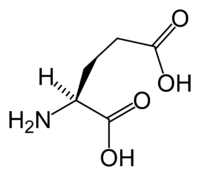
Photo from wikipedia
SUMMARY Ventral tegmental area (VTA) neurons play roles in reward and aversion. We recently discovered that the VTA has neurons that co-transmit glutamate and GABA (glutamate-GABA co-transmitting neurons), transmit glutamate… Click to show full abstract
SUMMARY Ventral tegmental area (VTA) neurons play roles in reward and aversion. We recently discovered that the VTA has neurons that co-transmit glutamate and GABA (glutamate-GABA co-transmitting neurons), transmit glutamate without GABA (glutamate-transmitting neurons), or transmit GABA without glutamate (GABA-transmitting neurons). However, the functions of these VTA cell types in motivated behavior are unclear. To identify the functions of these VTA cell types, we combine recombinase mouse lines with INTRSECT2.0 vectors to selectively target these neurons. We find that VTA cell types have unique signaling patterns for reward, aversion, and learned cues. Whereas VTA glutamate-transmitting neurons signal cues predicting reward, VTA GABA-transmitting neurons signal cues predicting the absence of reward, and glutamate-GABA co-transmitting neurons signal rewarding and aversive outcomes without signaling learned cues related to those outcomes. Thus, we demonstrate that genetically defined subclasses of VTA glutamate and GABA neurons signal different aspects of motivated behavior.
Journal Title: Cell reports
Year Published: 2020
Link to full text (if available)
Share on Social Media: Sign Up to like & get
recommendations!